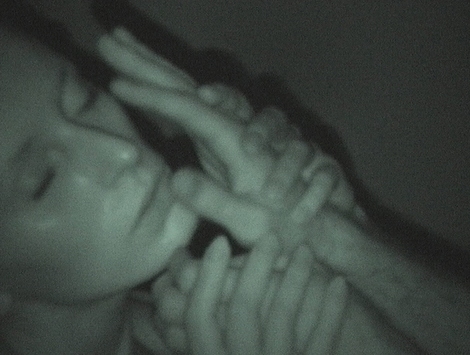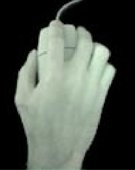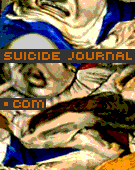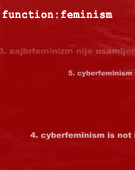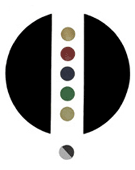One of the most widespread beliefs about the afterlife is that a person can return to the world in another shape-as a ghost, spectre, or wraith, the invisible double of the deceased taking over after death.[1] According to these beliefs, although ghosts are not of this world and are invisible and intangible to the living, they are still present and can reveal themselves through a medium. Revenances suggests that the Web is such a medium: that is a space of communication between the living and the dead. The project allows us to meet with ghosts, to hold out our hands to these captive presences from the other world and to join with them there. We pass through a series of structures reduced to their bare, skeletal outlines. In these empty rooms, shadowy images of remote beings appear and disappear; we cannot make them stay still, or speak with them. As ...
Full Description
One of the most widespread beliefs about the afterlife is that a person can return to the world in another shape-as a ghost, spectre, or wraith, the invisible double of the deceased taking over after death.[1] According to these beliefs, although ghosts are not of this world and are invisible and intangible to the living, they are still present and can reveal themselves through a medium. Revenances suggests that the Web is such a medium: that is a space of communication between the living and the dead. The project allows us to meet with ghosts, to hold out our hands to these captive presences from the other world and to join with them there. We pass through a series of structures reduced to their bare, skeletal outlines. In these empty rooms, shadowy images of remote beings appear and disappear; we cannot make them stay still, or speak with them. As the structures are embedded within each other, it is impossible to turn back, reach a destination, or achieve any real exchange. Caught in this non-place, we gradually realize that our behaviour has become like that of the ghosts whose ephemeral presence we have observed on the screen.
The work incites reflection on the spatial ambiguity of the Web, the (equally problematic) status of the individual within it, and on the nature of the interchanges that occur there. In this non-place, we move from one nowhere to another, cut adrift from life, having interrupted our continuity in real space to adopt a cyber-identity, a cyber-life. We communicate with other people who are roaming through digital space as we are, self-effaced from reality, disembodied and uprooted like us. In this universe, the need for the other subsists, but it is always really the other? This is precisely the question that the work raises. The “”death of human contact”" brought about by the development of communications technology does not mean the death of contact but rather a certain kind of death of the human being, bringing us to re-examine, at the very least, the inseparability of mind-body and to look at dualism. It calls on us to conceive of relations with others outside the limits of corporeal adherence, outside that anchor, and to consider the shifts and transformations of being that occur in cyberspace. (Sylvie Parent)
Work metadata
- Year Created: 2000
- Submitted to ArtBase: Thursday Jul 12th, 2012
- Original Url: http://www.incident.net/works/revenances/
-
Work Credits:
- Reynald Drouhin,
Take full advantage of the ArtBase by Becoming a Member
